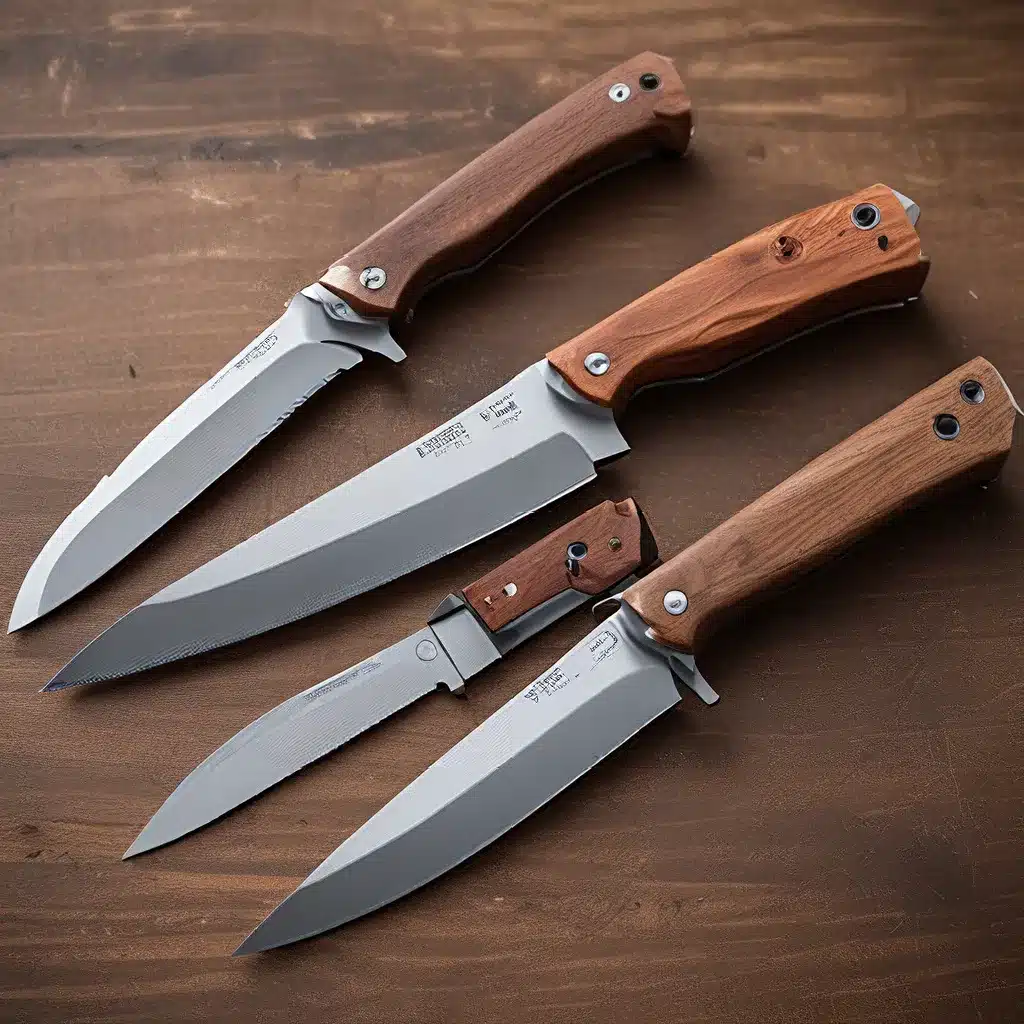
The Forging of a Culinary Revolution
As a self-proclaimed foodie and kitchen enthusiast, I’ve always been fascinated by the evolution of knives. These unassuming tools are the unsung heroes of the culinary world, silently shaping the flavors and textures that grace our plates. Recently, I stumbled upon the remarkable Schmidt Brothers Evolution knife set, and let me tell you, it’s been a game-changer in my kitchen.
The Schmidt Brothers have truly upped the ante with their Evolution series, forged from premium 100% German stainless steel. These knives are designed to deliver a “groundbreaking cutting experience” whether you’re a home chef or an Iron Chef. What sets them apart is the grooved blade that “reduces friction and pressure” during chopping, while still maintaining a clean, straight cut. And the best part? The blade is coated with a natural non-stick finish, free of any chemicals or coatings.
Herman Knives has been at the forefront of the knife evolution, constantly pushing the boundaries of what’s possible. Their relentless pursuit of innovation has led to the creation of cutting-edge tools that not only enhance our culinary experiences but also redefine the way we approach food preparation.
The Evolution of Endoscopic Knives
But it’s not just in the kitchen where knife technology has been evolving. In the medical field, Olympus has been spearheading the development of cutting-edge endoscopic knives, revolutionizing the way doctors treat gastrointestinal conditions.
Endoscopic Submucosal Dissection (ESD) is a groundbreaking procedure that allows for the removal of larger lesions and early-stage cancers in the esophagus and stomach, all while leaving the native organ intact. This minimally invasive approach not only reduces the need for open surgery but also leads to shorter hospital stays, faster recoveries, and less pain for the patient.
Olympus has been at the forefront of this medical revolution, collaborating with physicians in Japan to develop specialized knives that enable this innovative procedure. From the ITknife to the DualKnife J, Olympus has continuously expanded its portfolio of ESD tools, each designed to tackle specific challenges and enhance the overall effectiveness of the procedure.
The Art of Knife Mastery
Of course, no discussion of knife evolution would be complete without a nod to the legendary Miyabi brand. As a subsidiary of Zwilling J.A. Henckels, Miyabi has long been revered for its commitment to craftsmanship and attention to detail. Their Birchwood collection, for instance, features a stunning blend of traditional Japanese aesthetics and modern engineering.
Miyabi knives are not just tools; they’re works of art. The intricate Damascus pattern on the blades, the ergonomic handles, and the meticulous balance all come together to create an experience that transcends mere utility. It’s no wonder Miyabi has become a staple in the kitchens of discerning home cooks and professional chefs alike.
As I’ve delved deeper into the world of knives, I’ve come to appreciate the sheer artistry and innovation that goes into their design and creation. It’s not just about sharpness and efficiency; it’s about the intersection of form and function, where the blade becomes an extension of the user’s hand, seamlessly working in harmony to elevate the culinary experience.
The Future of Cutting-Edge Technology
But the evolution of knives doesn’t stop there. Researchers and engineers are constantly pushing the boundaries, exploring new materials, designs, and technologies that could further revolutionize the way we interact with these essential tools.
Ceramic knives, for instance, have gained popularity in recent years for their exceptional sharpness and resistance to corrosion. Santoku knives have become a staple in many modern kitchens, offering a versatile blend of Japanese and Western influences. And who knows what other innovations are on the horizon, waiting to be discovered?
As I continue to experiment with the Schmidt Brothers Evolution set and marvel at the advancements in endoscopic and Miyabi knives, I can’t help but wonder what the future holds. Will we see 3D-printed knives that can be customized to our exact specifications? Or perhaps self-sharpening blades that maintain their edge with minimal effort? The possibilities are truly endless.
One thing is certain: the cutting edge of knife evolution is constantly shifting, and I, for one, can’t wait to see what the future has in store. Whether you’re a seasoned chef or a curious home cook, the world of knives is a rabbit hole worth exploring. So sharpen your skills, and get ready to experience the future of culinary craftsmanship.


